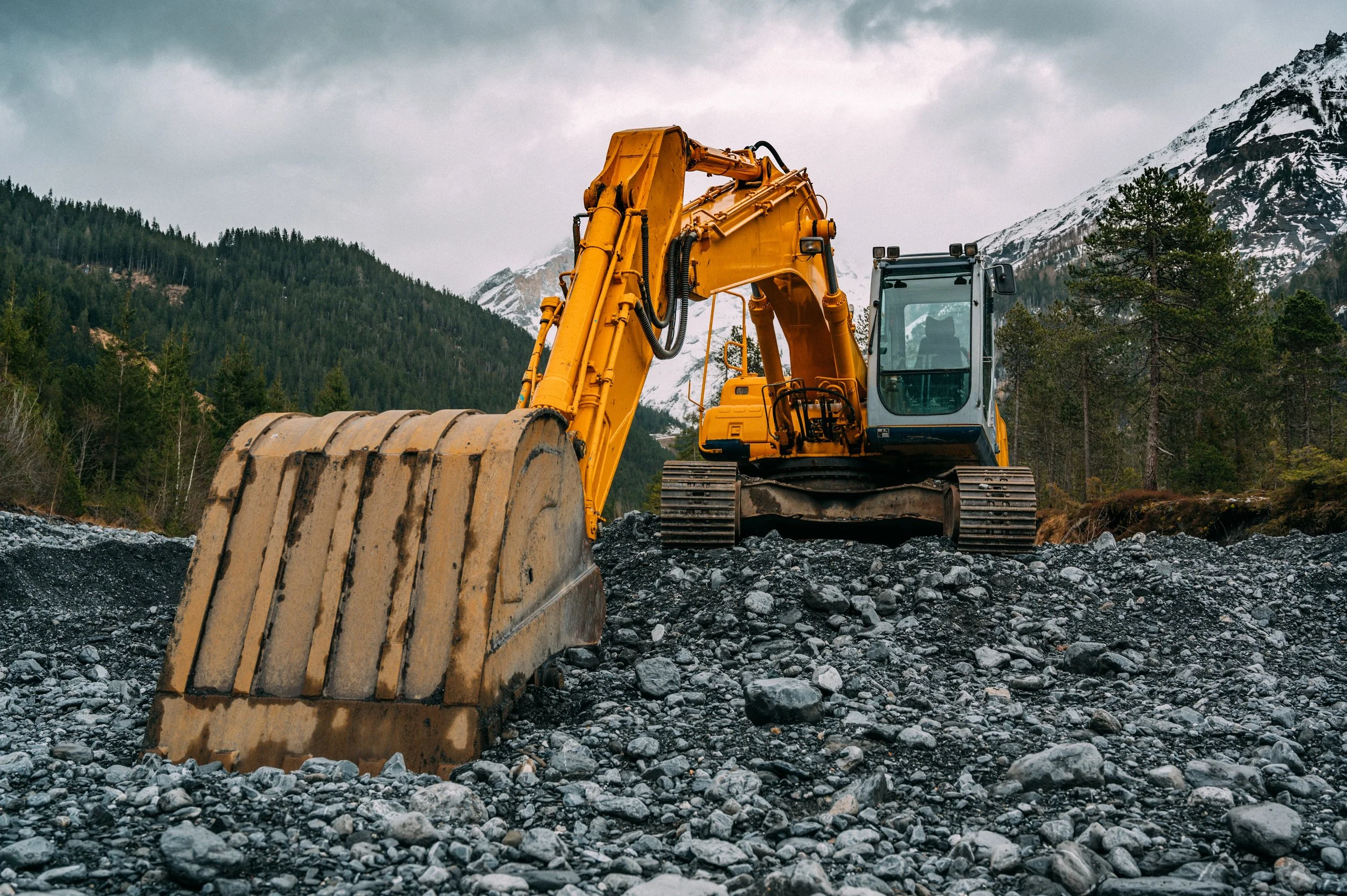WHAT IS EXCAVATION AND WHY IS IT ESSENTIAL TO CONSTRUCTION?
EXCAVATION
Excavation is the process of removing soil or rock from a specific area. This is done using various tools and equipment, such as shovels, picks, and bulldozers. Excavation is typically carried out in order to create a foundation for a new construction project, such as a building or a bridge, or to uncover artifacts or other objects of historical or archaeological interest.
How is it essential to construction?
Excavation is an essential part of the construction process, as it involves removing soil and rock from a specific area to create a foundation for a new structure. This is often necessary in order to level the ground and prepare it for the construction of a building or other structure.Excavation is also used to dig trenches for the installation of underground utilities, such as water and sewage pipes, electrical cables, and gas lines. This helps to ensure that the utilities are properly installed and functioning, and that they do not interfere with the construction process.In addition to preparing the ground for construction, excavation can also be used to uncover artifacts or other objects of historical or archaeological interest. This can provide valuable insights into the history and culture of the area, and can help to shed light on the lives of the people who lived there.Excavation can be a time-consuming and labor-intensive process, depending on the size and scale of the project. Before beginning an excavation, it is important to carefully plan and design the project, taking into account factors such as the type of soil or rock being removed, the location of the excavation site, and the potential impact on the surrounding environment.Once the excavation begins, the soil or rock is carefully removed in layers, using tools such as shovels and picks to break up the ground and extract the material. Larger excavation projects may also use heavy machinery, such as bulldozers and excavators, to remove the soil or rock more quickly and efficiently.As the excavation progresses, the soil or rock is carefully sorted and catalogued, and any artifacts or other objects of interest are carefully preserved for further study. In the case of archaeological excavations, the artifacts and objects recovered from the site can provide valuable insights into the history and culture of the area, and help to shed light on the lives of the people who lived there.Overall, excavation is an important process that enables us to uncover the hidden history of an area, and to build the foundations for new construction projects. It is a challenging and demanding field of work, but it can also be incredibly rewarding, providing valuable insights into the past and helping to shape the future.What is the purpose of excavation?
The purpose of excavation in construction is to prepare the site for building. This involves removing earth, rocks, and other materials in order to create a level and stable foundation for the structure.
Excavation is a crucial step in the construction process as it sets the foundation for the rest of the project. If the excavation is not done properly, it can lead to issues such as structural instability, water damage, and other problems that can be costly to repair.
During excavation, the site is surveyed and marked to ensure that the correct amount of material is removed. This is typically done using advanced surveying equipment and tools such as lasers and GPS systems.
Once the excavation is complete, the site is ready for further construction work such as grading, laying the foundation, and installing utilities. Grading involves leveling the site and ensuring that it is sloped properly to prevent water from pooling or eroding the soil. The foundation is then laid, which provides support for the structure and helps to distribute its weight evenly. Utilities such as water, sewer, and electrical lines are also installed at this stage.
Excavation is an essential part of the construction process, as it ensures that the site is prepared properly and ready for the next steps. Without proper excavation, the structure may not be stable and could be at risk of failure. By taking the time to carefully excavate the site, contractors can prevent potential issues and ensure that the project is completed successfully.
What are the different types of excavation?
There are several different types of excavation, including trenching, drilling, tunneling, and dredging.
Trenching is the process of excavating a narrow, deep hole in the ground. This is often used to install pipes, cables, or other underground utilities. Trenching can be done manually with shovels and other hand tools, or it can be done using large machines called trenching equipment.
Drilling is the process of creating a hole in the ground using a drilling rig. This can be done for a variety of purposes, including the extraction of oil and natural gas, the creation of wells for water, or the installation of geothermal heating systems.
Tunneling is the process of excavating a passage underground. This can be done using large machines called tunnel boring machines, or it can be done manually with hand tools. Tunneling is often used to create tunnels for transportation purposes, such as roads or railways.
Dredging is the process of excavating material from the bottom of a body of water. This is typically done using a large machine called a dredger, which sucks up the sediment and deposits it elsewhere. Dredging is often used to maintain the depth of a waterway, or to remove sand and other materials that have accumulated on the bottom of a body of water.
How is the excavation process planned and executed?
The excavation process is a complex task that requires careful planning and execution to ensure the safety of workers and the integrity of the site. The first step in the process is to conduct a thorough site survey to determine the location and extent of the excavation. This may involve analyzing geological and geophysical data, as well as conducting test pits and other types of exploratory work.
Once the location and extent of the excavation have been determined, the next step is to develop a detailed excavation plan. This plan will typically include the specific methods and techniques to be used, the equipment and machinery that will be needed, and the sequence in which the work will be carried out. The plan should also include measures to control dust, noise, and other potential environmental impacts.
Once the excavation plan has been developed, the next step is to obtain the necessary permits and approvals from local authorities. This may include obtaining permits for activities such as drilling, blasting, and the use of heavy machinery.
Once all the necessary permits and approvals have been obtained, the actual excavation work can begin. This may involve a variety of techniques, such as digging by hand or using heavy machinery. The exact methods used will depend on the nature of the excavation and the materials that are being removed.
Throughout the excavation process, careful monitoring and documentation are essential to ensure that the work is being carried out safely and in accordance with the plan. This may include conducting regular inspections of the site, monitoring air and water quality, and keeping detailed records of the work that has been done.
In summary, the excavation process involves conducting a site survey, developing a detailed plan, obtaining necessary permits and approvals, and carrying out the work safely and in accordance with the plan. Proper planning and execution are essential to ensure the safety of workers and the integrity of the site.
Featured Blogs
SIKES CONCRETE INC.
8030 FL-77, Southport, FL 32409
850-265-4564






